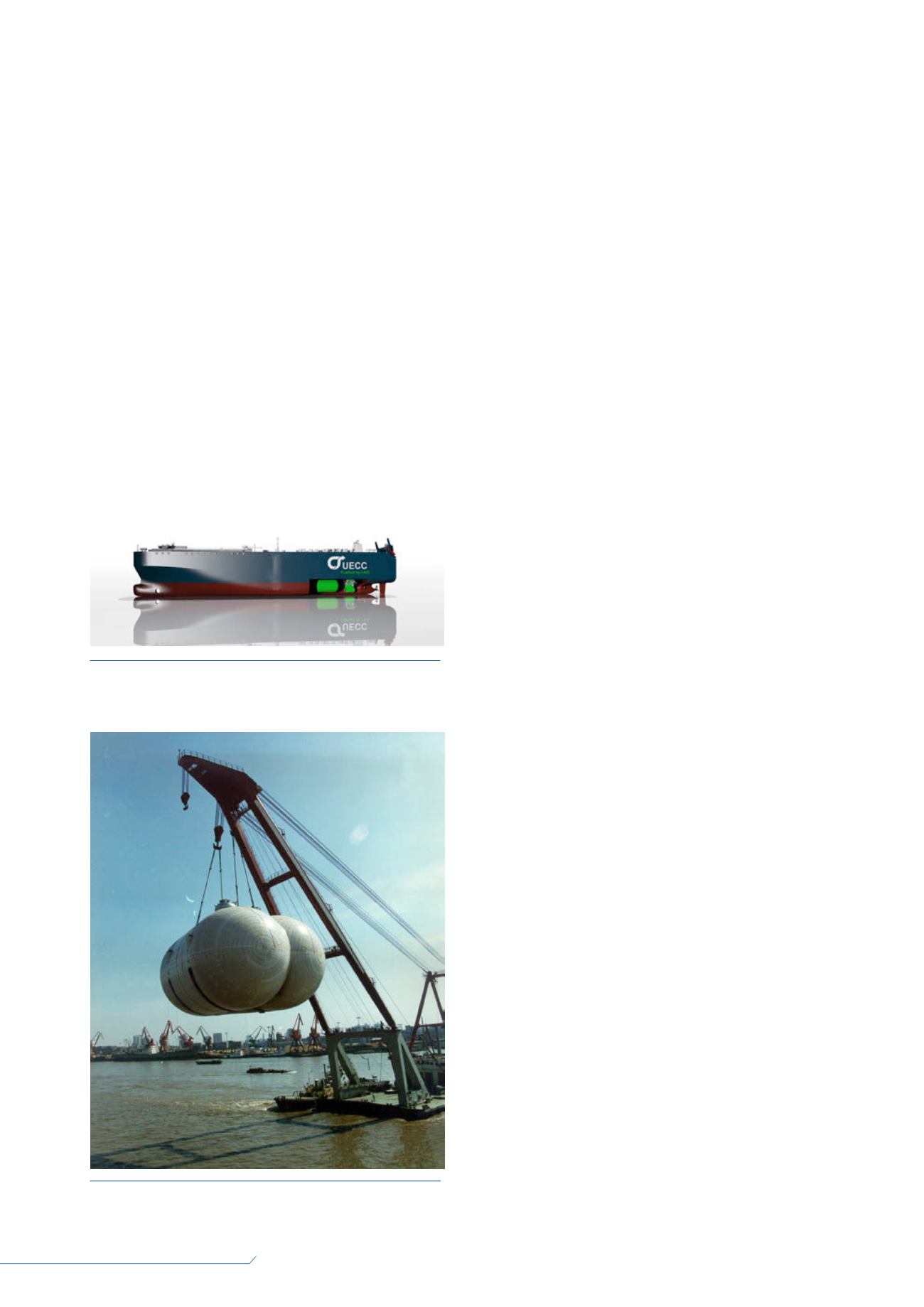
22
LNG
INDUSTRY
SEPTEMBER
2016
They will be equipped with vacuum-insulated tanks
installed below deck, and the fuel gas system will deliver
the natural gas to both high pressure main engines and
low pressure auxiliary engines.
United European Car Carriers (UECC) ordered two
dual-fuel, LNG-driven, pure car and truck carriers (PCTCs)
with 1A super Finnish/Swedish ice class with Kawasaki
Heavy Industries (KHI). The vessels will be constructed at
the NACKS shipyard in Nantong, China. They will be
capable of operating on LNG fuel or heavy fuel oil (HFO)
and marine gas oil (MGO), providing greater flexibility and
efficiency. They are the first PCTCs of their kind to be fitted
with LNG fuel propulsion systems, and can complete a
14 day round voyage in the Baltic using solely LNG fuel,
including main engine and auxiliary power generation. The
fuel gas systems will be capable of delivering natural gas
for both the high pressure MEGI engines and the low
pressure auxiliary engines. The LNG will be stored in a
Type C tank below deck with polystyrene insulation slabs.
Figure 4.
United European Car Carriers’ (UECC) pure car and
truck carrier (PCTC).
Figure 5.
Type C bilobe tank handling.
LNG containment system
The containment systems that store LNG on board ships
follow design principles familiar from gas carriers. The
three examples described in this article (except for the
Q-Max vessel, which had the LNG available from the
main cargo tank) clearly show the market trend. To
date, LNG as fuel applications in non-gas carriers have
used Type C pressure vessels only. There is a whole
range of technology solutions appearing in the market,
such as membrane tanks, Type B and Type A tanks.
Each solution may show its benefits in dedicated niche
applications, but have not been used to date.
A reliable choice for ship owners/shipyards,
emerging from a detailed analysis of the advantages/
disadvantages of each technology, is the pressurised
Type C tank solution, which offers the following
advantages:
Holding time: typically, the design pressure of
Type C tanks is set at 4 – 10 barg. These pressurised
vessels allow a longer holding time and further
flexibility to the running profile of the engines
considering periods of zero consumption.
Boil-off gas (BOG) management: the pressurised
vessel in combination with a simple BOG
compressor allows for the punctual control of the
gas flow and pressure inside of the LNG storage
tank. This technical solution provides the vessels
with great flexibility in terms of BOG management
and bunkering planning. Other tank concepts cannot
take pressure build-up of BOG, which leads to more
complicated gas handling systems and alternative
ways of burning the excess gas in a safe way.
Installation time: the tanks are delivered to the yards
ready for installation, with consequential advantages
in the planning for the retrofit or the newbuilding of
the vessel.
Investment: Type C tanks are relatively cheap
compared to other types of LNG storage tank
technologies.
Excellent safety records: Type C tanks are designed
to be inherently safe. They have been used as cargo
tanks for gas carriers for decades and no failure of
these tanks is known to date.
On the other hand, there is still no clear direction on
the choice between vacuum-insulated tanks and
foam-insulated tanks. In the small and medium scale
LNG carrier market, the foam-insulated tanks are the
only used solution. In the fuel gas system market, the
situation is slightly different due to smaller LNG
containment requirements. Vacuum insulation is still
considered to be a valuable solution. However, the
foam-insulated tanks offer weight advantages (due to
the double shell and perlite insulation, a
vacuum-insulated tank weighs twice as much as a
foam-insulated tank) and also give slightly less holding
time compared with the vacuum-insulated tanks. Where
the weight and investment are driven by cost,
foam-insulated Type C tanks are more widely used.


